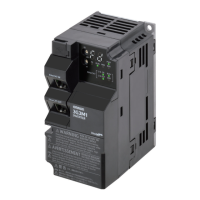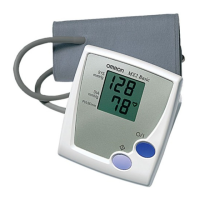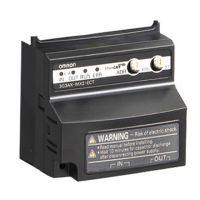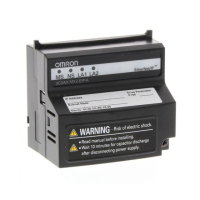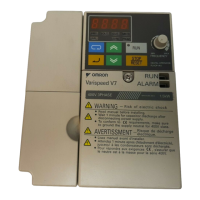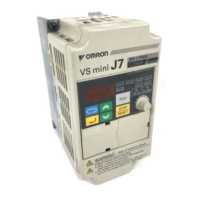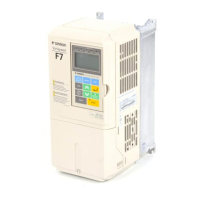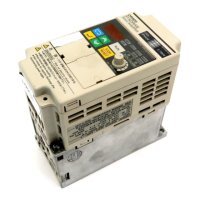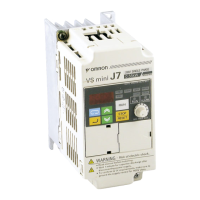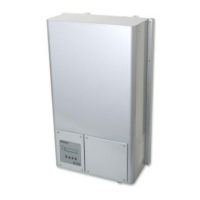02: Frequency pull-in restart
Frequency pull-in restart causes the inverter to restart by outputting the starting frequency set in
the Starting Frequency Selection at Frequency Pull-in Restart (b030) to the motor in a free-run
stop state. When the output current reaches the Frequency Pull-in Restart Level (b028), the
inverter decelerates according to the Frequency Pull-in Restart Parameter (b029) to suppress the
output current. Once the output frequency and the output voltage are balanced, the inverter per-
forms normal operation.
This enables a smooth restart independently of the voltage between motor terminals.
Use this setting when the Inverter is in free-run state for a long time due to a large load inertia.
•
When the Frequency Pull-in Lower Limit Frequency (b007) is set, executing the frequency pull-in
restart function causes the inverter to restart from 0 Hz if the frequency at shutoff is the set frequency
or less.
•
Immediately after a free-run stop, a large residual voltage remains between motor terminals.
If the inverter restarts the output, an overcurrent may occur. In this case, set the Restart Standby
Time (b003) to a long time.
•
While in a free-run stop state, the motor is not subject to external influence because the inverter out-
put is shut off.
Even if the motor is stopped by external brake or the effect of other equipment, the inverter can still
be used without detecting any overcurrent.
However, if the motor in a free-run state is rotated externally, the regenerated energy may be fed
back to the inverter and an overvoltage may be detected. In this case, use the regenerative braking
function.
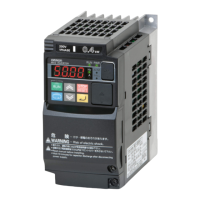
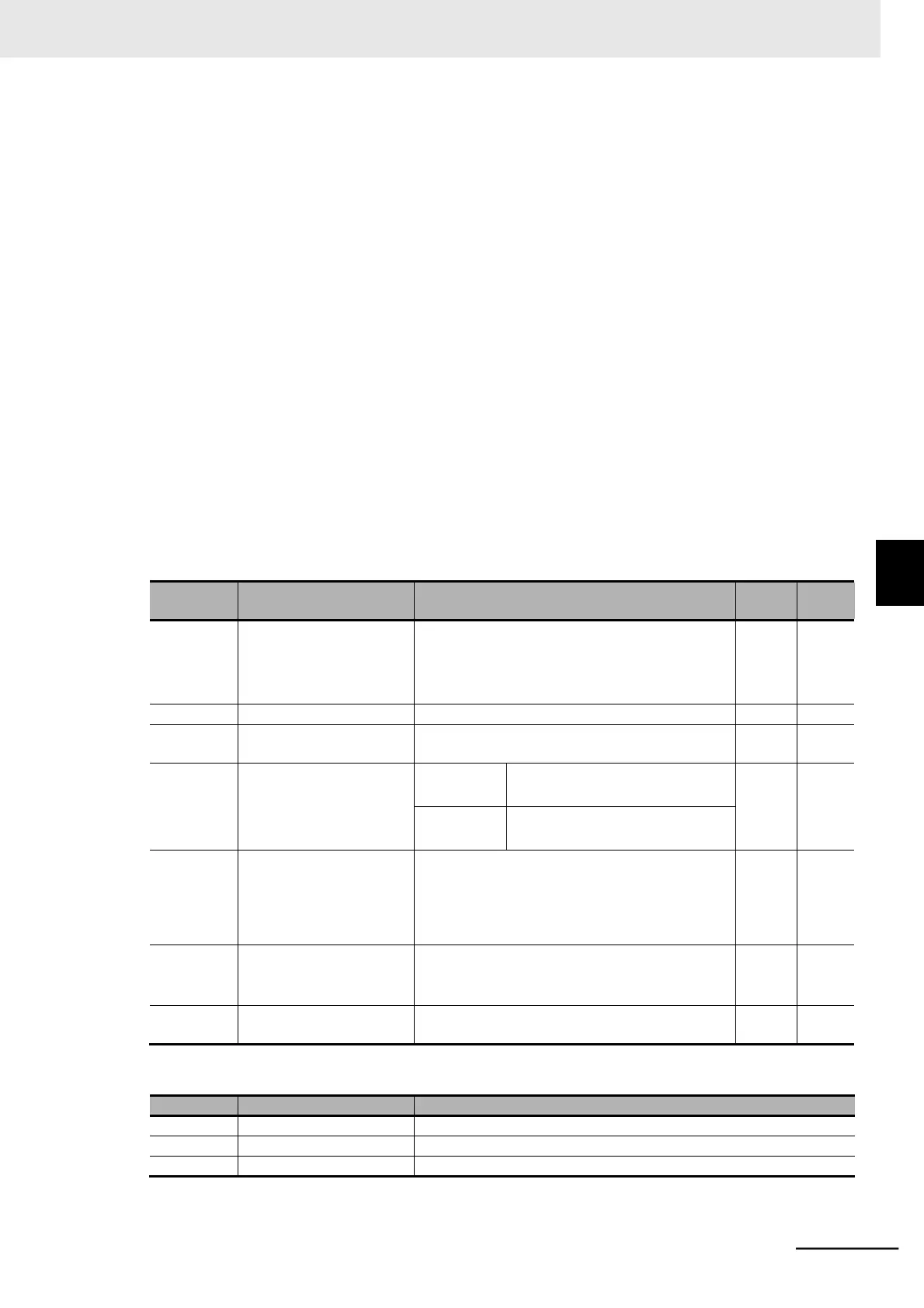